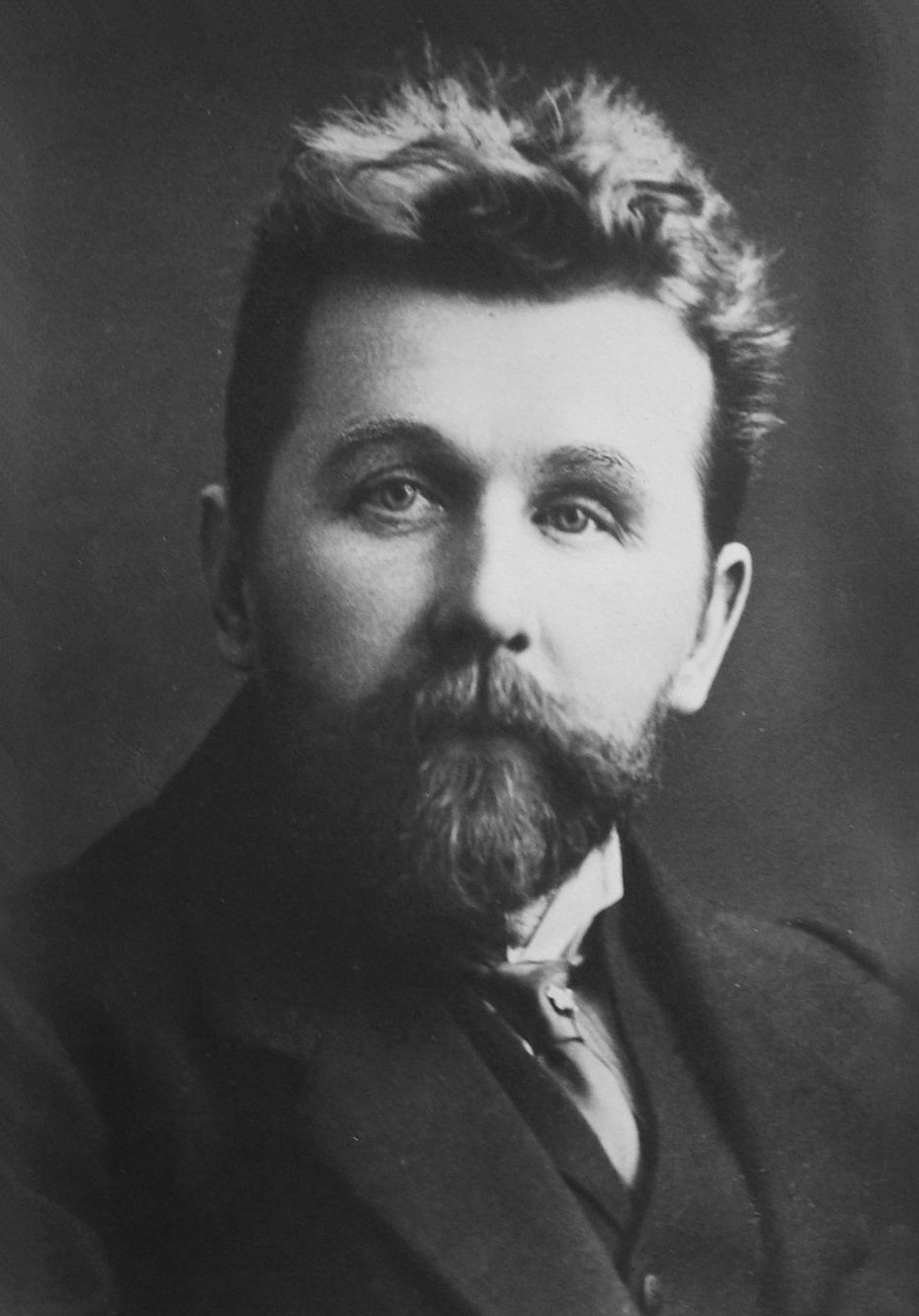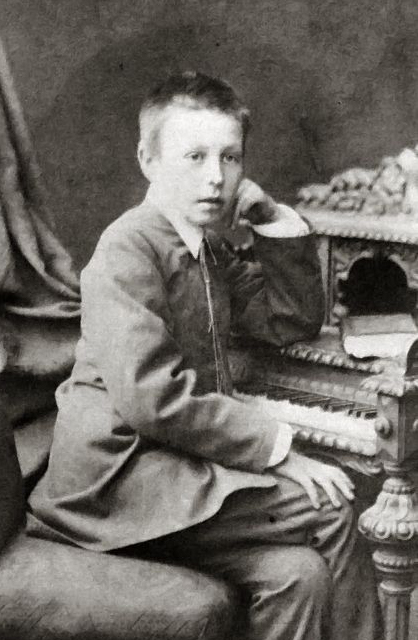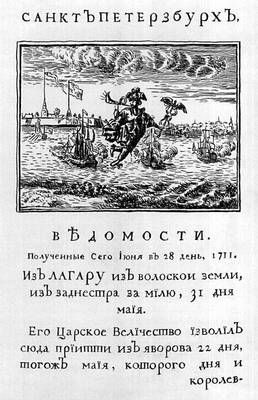|
Symphony No. 4 (Popov)
The Symphony No. 4, Op. 47, subtitled ''Glory to the Fatherland'' (), was completed by Gavriil Popov in 1949. He began to compose it in May 1948, under the influence of the Union of Soviet Composers' campaign against formalism in music. Originally conceived as a concerto for a cappella chorus based on texts by , Popov revised and expanded the work into a choral symphony with texts by Ilya Selvinsky. He completed it on September 18, 1949. After a private performance of one of its movements during a session in 1949, the symphony was briefly considered for a Stalin Prize. The score was subsequently lost until it was rediscovered in the archives of the Moscow Conservatory decades later. Its world premiere did not occur until February 6, 2023, at the Mariinsky Theatre in Saint Petersburg, with vocal soloists and the Vocal Ensemble Arielle conducted by Elmira Dadasheva. Background In February 1948, the Union of Soviet Composers launched its campaign against formalism in music, ... [...More Info...] [...Related Items...] OR: [Wikipedia] [Google] [Baidu] |
Gavriil Popov (composer)
Gavriil Nikolayevich Popov (; 12 September 1904 – 17 February 1972) was a Soviet composer. Life and career Popov studied at the Leningrad Conservatory from 1922 until 1930 with Leonid Vladimirovich Nikolayev, Vladimir Shcherbachov, and Maximilian Steinberg. He was considered to have the raw talent of his slightly younger contemporary Dmitri Shostakovich. His early works, in particular the Septet (or Chamber Symphony) (Op. 2, 1927) for flute, trumpet, clarinet, bassoon, violin, cello and bass, and his Symphony No. 1 (Op. 7) are impressively powerful and forward-looking. The symphony had its premiere by the Leningrad Philharmonic in 1935 and was immediately banned by a local censor; Popov was accused of formalism, a terrible stigma at the time. Together with Shostakovich, Popov successfully appealed the ban in Moscow, but nevertheless the symphony was not performed again until 1972. The influence of Popov's first symphony on Shostakovich's Symphony No. 4 is apparent ... [...More Info...] [...Related Items...] OR: [Wikipedia] [Google] [Baidu] |
Soprano
A soprano () is a type of classical singing voice and has the highest vocal range of all voice types. The soprano's vocal range (using scientific pitch notation) is from approximately middle C (C4) = 261 Hertz, Hz to A5 in Choir, choral music, or to soprano C (C6) or higher in operatic music. In four-part chorale style harmony, the soprano takes the highest part, which often encompasses the melody. The soprano voice type is generally divided into the coloratura soprano, coloratura, soubrette, lyric soprano, lyric, spinto soprano, spinto, and dramatic soprano, dramatic soprano. Etymology The word "soprano" comes from the Italian word ''wikt:sopra, sopra'' (above, over, on top of),"Soprano" ''Encyclopædia Britannica'' as the soprano is the highest pitch human voice, often given to the leading female roles in operas. "Soprano" refers ... [...More Info...] [...Related Items...] OR: [Wikipedia] [Google] [Baidu] |
Alexander Gretchaninov
Alexander Tikhonovich GretchaninovAlso commonly transliterated as ''Aleksandr/Alexandre'' ''Grechaninov/Gretchaninoff/Gretschaninow'' ( rus, Алекса́ндр Ти́хонович Гречани́нов, p=ɐlʲɪˈksandr ɡrʲɪtɕɐˈnʲinəf; – 3 January 1956) was a Russian Romantic music, Romantic composer. Life Gretchaninov started his musical studies rather late, because his father, a businessman, had expected the boy to take over the family firm. Gretchaninov himself related that he did not see a piano until he was 14 and began his studies at the Moscow Conservatory in 1881 against his father's wishes and without his knowledge. His main teachers there were Sergei Taneyev and Anton Arensky. In the late 1880s, after a quarrel with Arensky, he moved to St. Petersburg where he studied composition and orchestration with Nikolai Rimsky-Korsakov until 1893. Rimsky-Korsakov immediately recognized Gretchaninov's extraordinary musical imagination and talent and gave him m ... [...More Info...] [...Related Items...] OR: [Wikipedia] [Google] [Baidu] |
Sergei Taneyev
Sergey Ivanovich Taneyev (, ; – ) was a Russian composer, pianist, teacher of musical composition, composition, music theorist and author. Life Taneyev was born in Vladimir, Russia, Vladimir, Vladimir Governorate, Russian Empire, to a cultured and literary family of Russian nobility. A distant cousin, Alexander Taneyev, was also a composer, whose daughter, Anna Vyrubova, was highly influential at court. Alexander was drawn closely to the Romantic nationalism, nationalist school of music exemplified by The Five (composers), The Five, while Sergei would gravitate toward a more cosmopolitan outlook, as did Tchaikovsky.Brown, ''New Grove'', 18:558. He began taking piano lessons at the age of five with a private teacher. His family moved to Moscow in 1865. The following year, the nine-year-old Taneyev entered the Moscow Conservatory. His first piano teacher at the Conservatory was Edward Langer. After a year's interruption in his studies, Taneyev studied again with Langer. He also ... [...More Info...] [...Related Items...] OR: [Wikipedia] [Google] [Baidu] |
Sergei Rachmaninoff
Sergei Vasilyevich Rachmaninoff; in Russian pre-revolutionary script. (28 March 1943) was a Russian composer, virtuoso pianist, and Conducting, conductor. Rachmaninoff is widely considered one of the finest pianists of his day and, as a composer, one of the last great representatives of Romantic music, Romanticism in Russian classical music. Early influences of Pyotr Ilyich Tchaikovsky, Tchaikovsky, Nikolai Rimsky-Korsakov, Rimsky-Korsakov, and other Russian composers gave way to a thoroughly personal idiom notable for its song-like melody, melodicism, Music#Expression, expressiveness, dense Counterpoint, contrapuntal textures, and rich Orchestration, orchestral colours. The piano is featured prominently in Rachmaninoff's compositional output and he used his skills as a performer to fully explore the expressive and technical possibilities of the instrument. Born into a musical family, Rachmaninoff began learning the piano at the age of four. He studied piano and composition at ... [...More Info...] [...Related Items...] OR: [Wikipedia] [Google] [Baidu] |
TASS
The Russian News Agency TASS, or simply TASS, is a Russian state-owned news agency founded in 1904. It is the largest Russian news agency and one of the largest news agencies worldwide. TASS is registered as a Federal State Unitary Enterprise, owned by the government of Russia. Headquartered in Moscow, it has 70 offices in Russia and in the Commonwealth of Independent States (CIS), "along with 56 global branches in 53 countries". In the Soviet period, it was named the Telegraph Agency of the Soviet Union () and was the central agency of the Soviet government for news collection and distribution for all Soviet newspapers, radio and television stations. After the dissolution of the Soviet Union, it was renamed Information Telegraph Agency of Russia (ITAR-TASS) () in 1992, but reverted to the simpler TASS name in 2014. Currently, on a daily basis TASS is "publishing nearly 3,000 news items in six languages and about 700 photographs and videos from correspondents in Russia and a ... [...More Info...] [...Related Items...] OR: [Wikipedia] [Google] [Baidu] |
Sankt-Peterburgskie Vedomosti
The ''Vedomosti'' () is Russia's oldest newspaper. It was established by Peter the Great's ukase dated 16 December 1702. The first issue appeared on 2 January 1703. Petrine Vedomosti Following along the lines of the 17th-century handwritten ''Kuranty'', Peter's newspaper contained little other than reports of military victories and diplomatic relations, either composed by the tsar himself or translated from Dutch newspapers according to his choice. Originally, the newspaper was published at the Print Yard in Kitai-gorod, Moscow. In 1710, engravings were introduced by way of decoration. They usually represented the Peter and Paul Fortress or the Neva River, thus reflecting the growing importance of Saint Petersburg. From 1711, most issues were printed in the Northern capital. Peter's ''Vedomosti'' was published quite irregularly, as important news arrived — sometimes as many as seventy issues appeared annually, only one. The circulation fluctuated from several dozen copies ... [...More Info...] [...Related Items...] OR: [Wikipedia] [Google] [Baidu] |
Dmitri Shostakovich
Dmitri Dmitriyevich Shostakovich, group=n (9 August 1975) was a Soviet-era Russian composer and pianist who became internationally known after the premiere of his First Symphony in 1926 and thereafter was regarded as a major composer. Shostakovich achieved early fame in the Soviet Union, but had a complex relationship with its government. His 1934 opera '' Lady Macbeth of Mtsensk'' was initially a success but later condemned by the Soviet government, putting his career at risk. In 1948, his work was denounced under the Zhdanov Doctrine, with professional consequences lasting several years. Even after his censure was rescinded in 1956, performances of his music were occasionally subject to state interventions, as with his Thirteenth Symphony (1962). Nevertheless, Shostakovich was a member of the Supreme Soviet of the RSFSR (1947) and the Supreme Soviet of the Soviet Union (from 1962 until his death), as well as chairman of the RSFSR Union of Composers (1960–1968). Over ... [...More Info...] [...Related Items...] OR: [Wikipedia] [Google] [Baidu] |
Antiformalist Rayok
''Antiformalist Rayok'' (), also known as ''Learner's Manual'', without opus number, is a satirical cantata for four voices, chorus, and piano by Dmitri Shostakovich. It is subtitled ''As an aid to students: the struggle of the realistic and formalistic directions in music''. It satirizes the conferences that resulted from the Zhdanov decree of 1948 and the anti-formalism campaign in Soviet arts which followed it. The work includes quotations from Andrei Zhdanov's speech at the Conference of the Musicians at the Central Committee of the all-Union Party in Moscow in January 1948. The libretto also incorporates Dmitri Shepilov's speech at the Second Congress of Composers in 1957, in which he mispronounces the name of the composer Nikolai Rimsky-Korsakov (''KorSAkov''). In regard to music, there are references to the traditional Georgian folk song "Suliko", Joseph Stalin's favourite song, and the popular Russian folk tunes " Kalinka" and "Kamarinskaya". It also contains music ... [...More Info...] [...Related Items...] OR: [Wikipedia] [Google] [Baidu] |
Modest Mussorgsky
Modest Petrovich Mussorgsky (; ; ; – ) was a Russian composer, one of the group known as "The Five (composers), The Five." He was an innovator of Music of Russia, Russian music in the Romantic music, Romantic period and strove to achieve a uniquely Russian musical identity, often in deliberate defiance of the established conventions of Western music. Many of List of compositions by Modest Mussorgsky, Mussorgsky's works were inspired by Russian history, Russian folklore, and other national themes. Such works include the opera ''Boris Godunov (opera), Boris Godunov'', the orchestral tone poem ''Night on Bald Mountain'' and the piano suite ''Pictures at an Exhibition''. For many years, Mussorgsky's works were mainly known in versions revised or completed by other composers. Many of his most important compositions have posthumously come into their own in their original forms, and some of the original scores are now also available. Name The spelling and pronunciation of the c ... [...More Info...] [...Related Items...] OR: [Wikipedia] [Google] [Baidu] |
Gnessin Institute
The Gnessin State College of Music () and Gnessin Russian Academy of Music () comprise a music school in Moscow.Moisenko, Rena. (1949) ''Realist Music: 25 Soviet Composers,'' London: Meridian Book, Ltd. History Originally known as the Gnessin Institute, it was established on February 15, 1895, by three sisters: Evgenia Fabianovna, Elena Fabianovna, and Maria Fabianovna Gnessin. Each of the Gnessin sisters had studied piano and graduated with distinction from the Moscow Conservatory.Phillips, Anthony & Prokofiev, Sergey. (2006). "Sergey Prokofiev Diaries, 1907–1914: Prodigious Youth", p. 498 Ithaca: Cornell University Press. Construction of the modern building began in 1937, interrupted during the war and resumed in 1943. The main part of the academy was built in 1946. The college quickly became, and remains, an elite music school, considered second only to the Moscow Conservatory. Founders The Gnessin sisters were born in Rostov-on-Don, the children of Rostov Rabbi Fabian ... [...More Info...] [...Related Items...] OR: [Wikipedia] [Google] [Baidu] |
Bolshoi Theatre
The Bolshoi Theatre ( rus, Большо́й теа́тр, r=Bol'shoy teatr, p=bɐlʲˈʂoj tʲɪˈat(ə)r, t=Grand Theater) is a historic opera house in Moscow, Russia, originally designed by architect Joseph Bové. Before the October Revolution it was a part of the Imperial Theatres of the Russian Empire along with Maly Theatre (Moscow), Maly Theatre (''Small Theatre'') in Moscow and a few theatres in Saint Petersburg (Hermitage Theatre, Bolshoi Theatre, Saint Petersburg, Bolshoi (Kamenny) Theatre, later Mariinsky Theatre and others). The Bolshoi Ballet and Bolshoi Opera are among the oldest and best known ballet and opera companies in the world. It is by far the world's biggest ballet company, with more than 200 dancers. The theatre is the parent company of The Bolshoi Ballet Academy, a leading school of ballet. It has a branch at the Bolshoi Theater School in Joinville, Brazil. The main building of the theatre, rebuilt and renovated several times during its history, is a lan ... [...More Info...] [...Related Items...] OR: [Wikipedia] [Google] [Baidu] |






